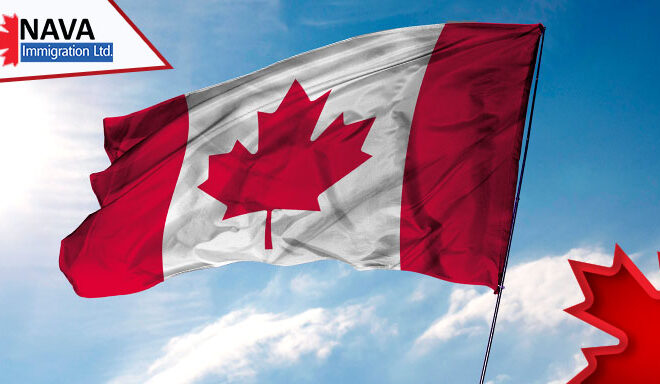Canada Reveals New Tech-Talent Strategy to Attract Skilled Immigrants
For the first time, Canada’s Immigration Minister, Mr. Fraser, declared the measures that IRCC will be enforcing to entice international tech talent to the country. This announcement was made on June 27, 2023.
The measures for tech talent are called Canada’s Tech Talent Strategy and comprise the following.
- A new innovation stream is introduced under the International Mobility Program (IMP)
- Aiming to attract digital nomads.
- By developing a streamlined work permit for H1-B specialty occupation visa holders, it aims to enhance labor mobility in North America.
- Modifications to current tech programs like the Global Skills Strategy and the Start-up Visa
Canada’s Tech Talent Strategies
Let’s go over the new tech talent strategies in detail here.
1. New innovation stream under the IMP
In order to address the labor shortage in the main tech occupations and expand the talent base in Canada, IRCC intends to launch a new innovation stream under the International Mobility Program (IMP) to entice highly talented tech workers.
As per the IRCC, the new stream is expected to be launched by the end of this year. Also, the new stream will be immune from the LMIA process, which is Labour Market Impact Assessment. This will allow employers as well as workers to support the preferences of the country for the tech industries.
IRCC is reviewing two different options under this:
- For workers intending to work for a company managed by the Canadian government, contributing to the industrial innovation purpose, IRCC is considering an Employer-specific work permit for a maximum of five years.
- IRCC is also considering an open work permit for a maximum of five years for highly experienced workers in specific in-demand professions
2. Attracting Digital Nomads
Under the new tech strategies, IRCC also aims to promote Canada as a digital nomad destination by working with the public as well as private associates to understand whether the new policies to entice digital nomads would be advantageous to Canada.
As per Canada’s existing immigration laws, a digital nomad can only live in Canada for a maximum of six months while working remotely for a foreign employer.
The Immigration, Refugees and Citizenship Canada (IRCC) expect that these digital nomads would choose to live in Canada and look for employment possibilities within Canadian enterprises.
3. Improvements to current tech programs
In order to benefit workers in high-skilled tech occupations, IRCC is enhancing Canada’s existing programs.
The Global Skills Strategy: This program was established to help employers in Canada who are striving for immediate access to highly skilled international talent. The processing times for the work permit applications for the Global Skills Strategy have returned to normal processing times of pre-pandemic levels.
Additionally, for processing Global Talent Stream LMIAs, Employment and Social Development Canada (ESDC) is satisfying its two-week processing standard, and IRCC is satisfying the two-week standard for work permit applications.
The Start-Up Visa: For foreign entrepreneurs, this program offers a way for permanent residents (PR) who have acquired the support of a renowned Canadian venture capital fund, business incubator, or angel investor organization to begin their business.
Under this program, many spots were assigned to address the extended waiting times for the applicants. This, in addition, implies that the immigration target for permanent residents expected under the Federal Business category in 2023 has increased three times and is also anticipated to rise in 2024 and 2025.
Acknowledging the extended application wait times caused by the popularity of the SUV program, IRCC is altering the temporary work permit option for SUV applicants. Also, instead of a one-year work permit that limits the applicants to only work for their own start-ups, IRCC is allowing them to apply for a three-year open work permit.
Compared to the current situation, the work permit will be provided to every entrepreneurial team member. Until now, the members who are considered to be essential and urgently required in Canada can apply for work permits.
Furthermore, applications that are supported by committed capital or advocated by a business incubator will be prioritized by IRCC and moved to the front of the processing queue.
4. Work permit for H1-B specialty occupation visa holders
Numerous of individuals who are working in high-tech fields are hired in organizations with large operations in both Canada as well as the US. Also, those who are functioning in the US usually have an H1-B specialty work visa.
H1-B specialty visa holders in the US and their accompanying family members will be able to enter Canada beginning July 16 this year.
The applicants will obtain an open work permit for a maximum of three years. This implies that they can work for any employer throughout Canada.
Also, the spouses and dependents of the applicants, with a work and study permit, will be permitted to apply for a temporary resident visa if needed.
Notably, this effort will remain effective for a period of one year or until IRCC obtains 10,000 applications. Only the primary applicant will be considered for this target, not the accompanying family members.
Additional ways to move to Canada as a tech professional
Besides the Global Talent Stream and the H1-B specialty occupation visa programs, in the Tech Talent Strategy, there are additional ways, such as work permits and immigration programs that are specially designed for international tech workers.
1. Category-Based Express Entry Draws
For Express Entry candidates, Mr. Fraser, at the end of May, announced the new category-based selection draws. The IRCC will prefer EE candidates with strong French-speaking abilities or work experience in any of the following mentioned five new categories:
- Healthcare
- Science, technology, engineering, and mathematics (STEM)
- Trades, such as contractors, carpenters, and plumbers,
- Transport
- Agriculture and agri-food
Under category-based draws for STEM occupations, there are more than 24 eligible occupations. As per the Statistics Canada report, released at the end of the year 2022, there is a skill gap in the STEM labor force of Canada.
IRCC holds the category-based draws for the STEM occupations for the first time on July 5. In this draw, 500 applicants in the STEM professions received the ITAs for Permanent residency.
IRCC invites the highest-ranking candidates in category-based EE draws who are eligible for a specific category and can help fill the vacant positions in the Canadian labor and job market as well as support in satisfying the identified economic goal of the country.
The new category-based draws will occur in addition to the regular Express Entry draws.
In the Express Entry pool, individuals are assessed based on a point-based system referred to as the Comprehensive Ranking System (CRS).
This system takes into account various factors to rank candidates, such as age, education, work experience, language skills, and more.
Notably, if a candidate qualifies for a targeted category, they will still need to satisfy the minimum CRS score requirement of IRCC to receive an ITA for a specific draw.
2. Tech Provincial Nominee Program Streams
The Provincial Nominee Program, or PNP, is a stream that allows provinces and territories to establish their own pathways as per the labor market and economic goals of their province.
To encourage immigration to their province, the province, and territories can invite international skilled workers via PNP.
Various provinces manage specific streams devoted to tech workers.
The province of Alberta has an Alberta Accelerated Tech Pathway. It’s a quick processing immigration program for tech professionals who exists in the Express Entry System.
If a person has a job offer or is currently employed in an Alberta technology industry in a qualified tech occupation, they can apply under this fast-track pathway.
Similarly, British Columbia has a British Columbia PNP Tech stream. This stream was established in 2017 to address the fast-growing demand for talent in the tech section in British Columbia. Later, in 2021, this stream became a permanent pathway. BC holds draws under this program on a weekly basis and issues invitations to eligible candidates with a job offer in any one of the 29 eligible tech professions.
The job offer must be valid, full-time, of at least one-year duration, and must be offered by the province’s eligible employer.
3. Facilitated Processing Stream of Quebec
Through the Facilitated Processing Stream, Quebec employers are allowed to hire temporary foreign workers who are eligible under specific targeted professions.
Employers can take advantage of the stream by being exempt from the requirements that are usually necessary under the LMIA. All the categories of occupations that are eligible for the Temporary Foreign Worker Program or TFWP are included in Quebec’s facilitated occupations list. Most of these occupations belong to the tech industry.





